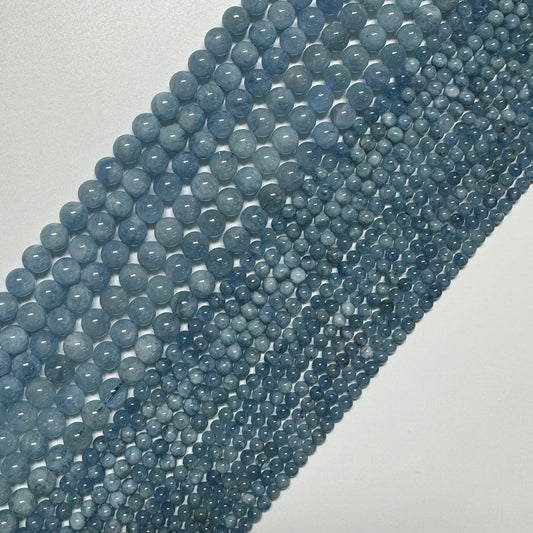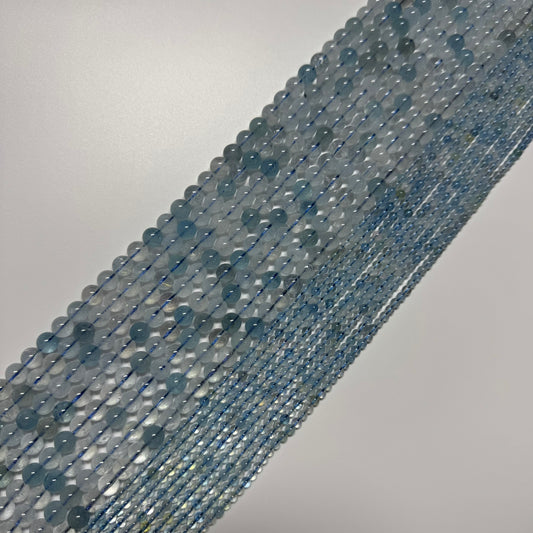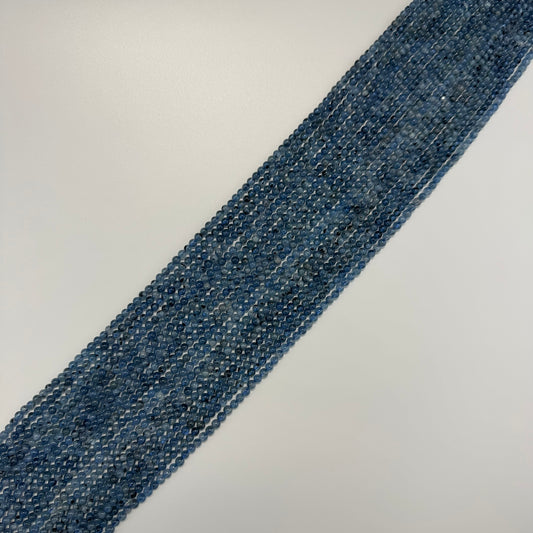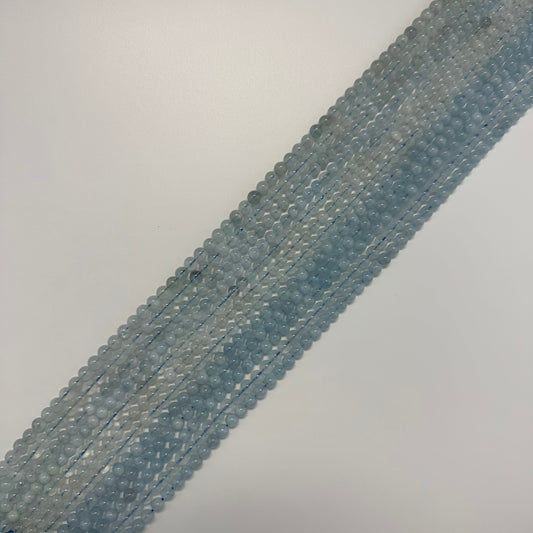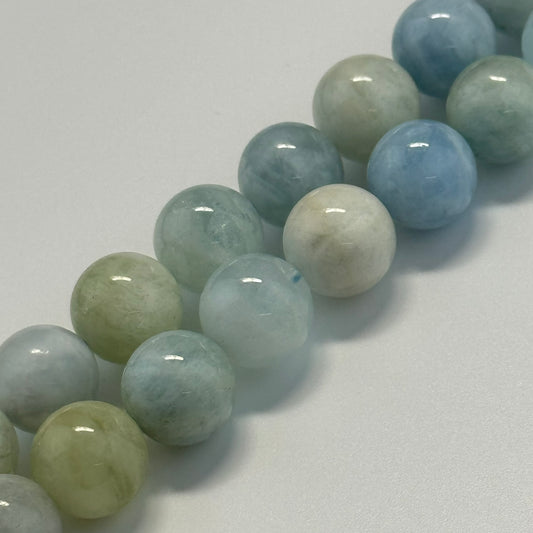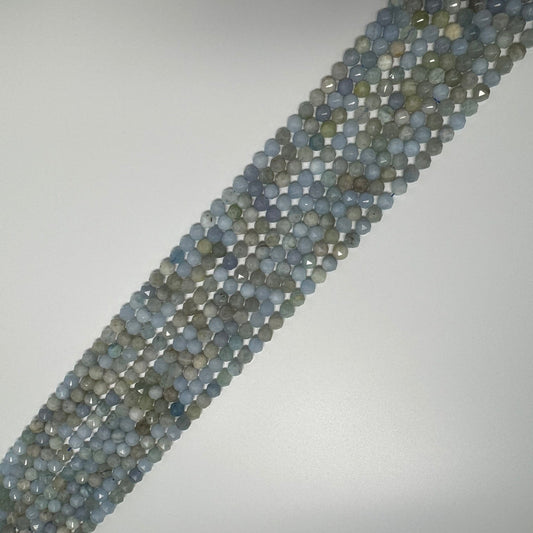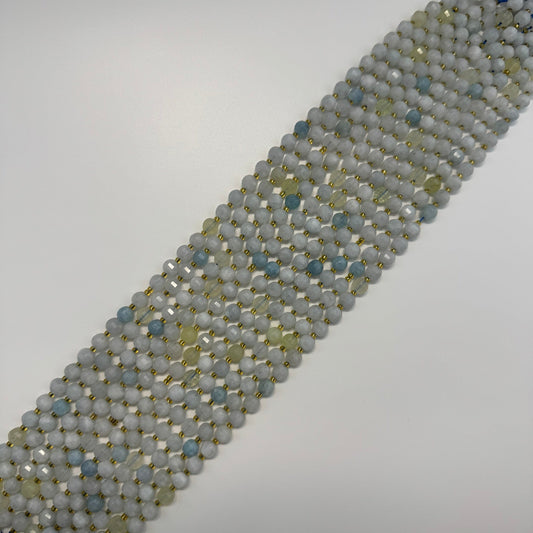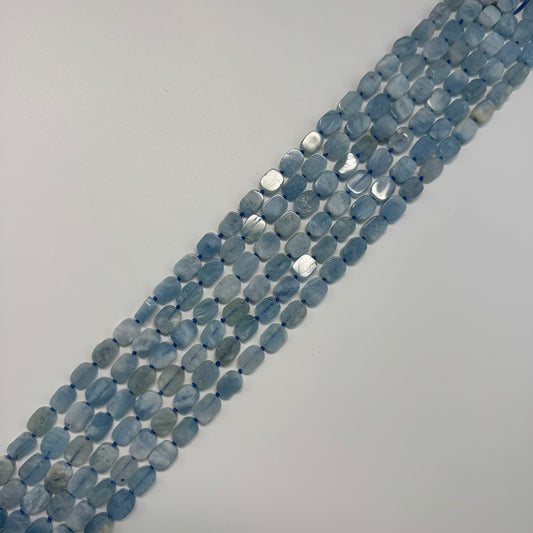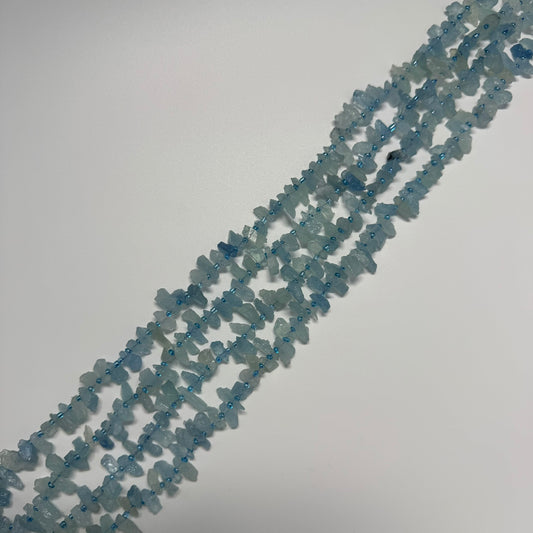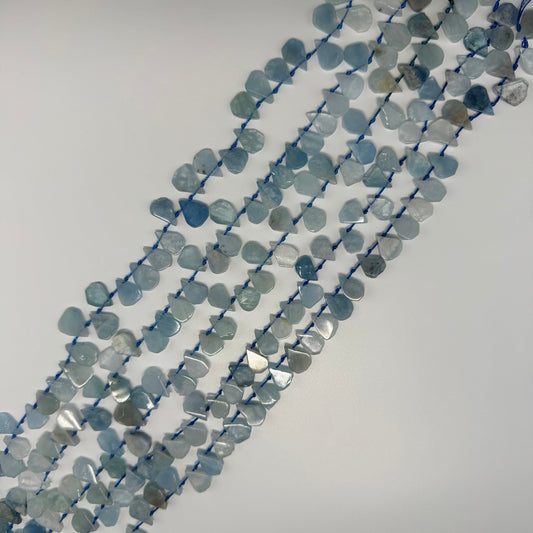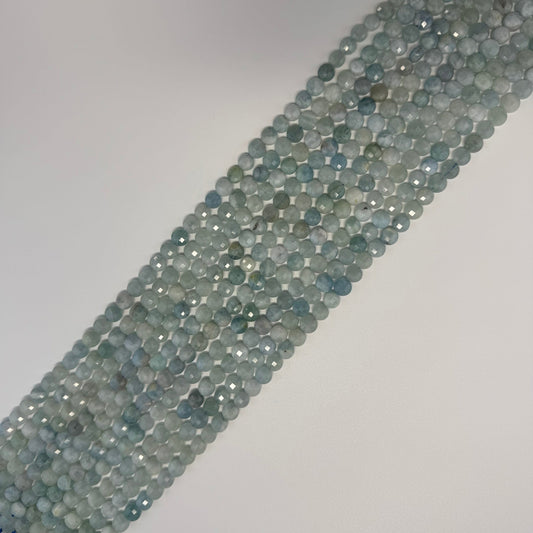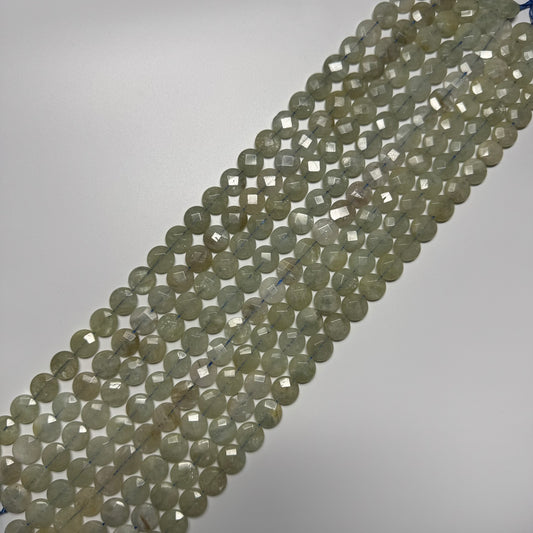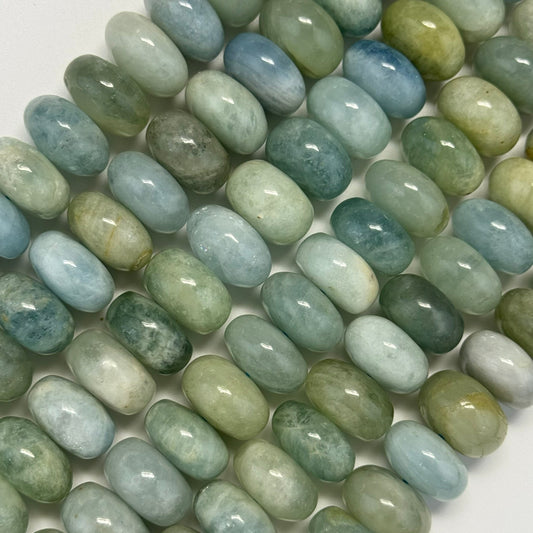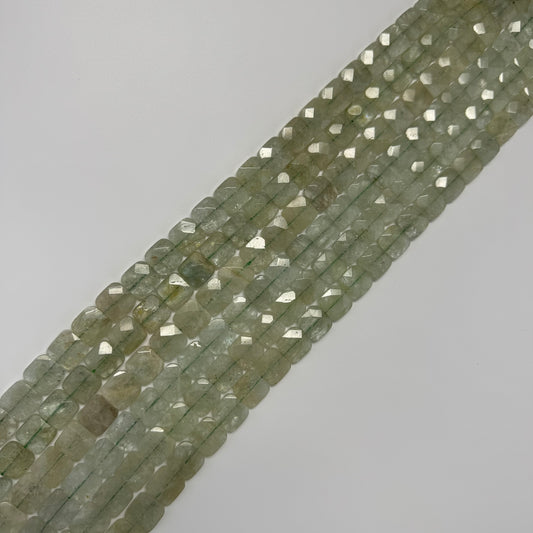Aquamarine
Aquamarine is a gem-quality variety of the mineral beryl, with the chemical formula Be₃Al₂(SiO₃)₆. Its name derives from the Latin words “aqua” (water) and “marina” (sea), reflecting its characteristic sea-blue to blue-green colour. Aquamarine is prized in gemology for its transparency, vitreous luster, and hardness of 7.5-8 on the Mohs scale, making it ideal for durable jewelry applications.
Is Aquamarine a Gemstone or Crystal? (Scientific Overview)
Scientifically, aquamarine is both a gemstone and a crystal. As a gemstone, it is a cut and polished variety of the mineral beryl used in jewelry. As a crystal, it forms naturally in hexagonal prismatic structures within pegmatites and metamorphic rocks. Its distinct blue colour is due to trace iron (Fe²⁺) impurities within its crystal lattice, differentiating it from other beryl varieties such as emerald (chromium or vanadium-coloured) and morganite (pink, manganese-coloured).
Aquamarine Stone Birthstone
Aquamarine is the traditional birthstone for March. Historically associated with the sea, it was believed to protect sailors and ensure safe voyages. Modern gemological traditions attribute aquamarine with qualities of clarity, calmness, and communication, making it a meaningful birthstone gift for those born in March.
Aquamarine Stone Significance and Meaning
Aquamarine holds significance as a symbol of serenity, clarity, and harmony. In ancient traditions, it was believed to protect travelers across water and bring calm to turbulent relationships. Its meaning extends to promoting clear communication, courage, and inner peace, aligning with its tranquil sea-coloured hues.
Aquamarine Color
Aquamarine displays colours ranging from pale sky blue to deep blue-green, with the most valued hues being pure medium blue or slightly greenish blue. Its colour arises from iron (Fe²⁺) ions within the beryl crystal structure, and heat treatment can reduce greenish tones to enhance its desirable blue shade. Unlike many coloured stones, aquamarine typically forms in larger, inclusion-free crystals suitable for sizeable gem cuts.
Aquamarine Jewelry
Aquamarine is extensively used in jewelry due to its beauty and durability. It is fashioned into a variety of pieces including rings, earrings, necklaces, pendants, and bracelets. The stone’s hardness and clarity allow lapidaries to cut it in brilliant or step cuts that highlight its transparency and enhance its natural brilliance.
Aquamarine Engagement Ring
Aquamarine engagement rings are favoured for their unique oceanic hues and durability. The stone’s hardness of 7.5-8 makes it suitable for daily wear while offering a distinct alternative to traditional diamond rings. Aquamarine symbolizes harmony, trust, and calm communication in relationships.
Aquamarine Earrings
Aquamarine earrings, ranging from simple studs to elegant drop designs, highlight the stone’s serene colour and clarity. They are often set in sterling silver or white gold to complement the cool blue tones of the gemstone, creating a sophisticated and versatile accessory.
Aquamarine Ear Studs
Aquamarine ear studs offer a minimalist yet luxurious option for showcasing this gemstone. Typically cut in round or oval shapes, they provide a subtle pop of colour suitable for everyday wear or formal occasions.
Aquamarine Necklace
Aquamarine necklaces feature the gemstone as a pendant or in beaded designs. Pendant styles often highlight a single faceted aquamarine stone set in gold or silver, while beaded necklaces incorporate polished aquamarine beads for a natural, calming aesthetic.
Aquamarine Bracelet
Aquamarine bracelets are crafted with either polished beads strung together or faceted stones set in metal links. Their soothing blue tones complement other gemstones and metals, making them suitable for both casual and formal wear. Aquamarine bracelets are also believed to promote calmness and clear expression, aligning with the stone’s metaphysical properties.
Aquamarine Pendant
Aquamarine pendants showcase the stone's clarity and soft blue colour in minimalist or elaborate designs. Often set in sterling silver or white gold, pendants range from small polished cabochons to large faceted statement pieces, making them ideal gifts symbolizing protection, courage, and peace.
Frequently Asked Questions
What is aquamarine?
Aquamarine is a gem-quality blue to blue-green variety of the mineral beryl, with the chemical formula Be₃Al₂(SiO₃)₆. Its name derives from Latin meaning “sea water” due to its characteristic ocean-like colour.
What gives aquamarine its blue colour?
The blue colour of aquamarine is caused by trace amounts of iron (Fe²⁺) within the beryl crystal lattice. Heat treatments can enhance its pure blue hue by reducing greenish tones.
What is the hardness of aquamarine?
Aquamarine has a hardness of 7.5 to 8 on the Mohs scale, making it a durable gemstone suitable for daily-wear jewelry including rings and bracelets.
Where is aquamarine found?
Major sources of aquamarine include Brazil, Nigeria, Madagascar, Pakistan, Afghanistan, Mozambique, and Russia. Brazil is known for producing large, high-quality crystals.
What is aquamarine’s birthstone month?
Aquamarine is the birthstone for March, symbolizing clarity, serenity, and harmony.
What are the metaphysical properties of aquamarine?
Aquamarine is believed to promote calmness, clear communication, courage, and protection, especially for travelers crossing the sea.
Is aquamarine heat treated?
Most aquamarine on the market is heat treated to enhance its blue colour by removing yellowish or greenish tones. This treatment is stable and widely accepted in the gem trade.
What are the different colours of aquamarine?
Aquamarine ranges from pale sky blue to deep blue-green, with pure medium blue stones being the most valued in the jewelry market.
How is aquamarine formed?
Aquamarine forms in pegmatite veins and metamorphic rocks where beryllium-rich fluids crystallize into beryl minerals containing iron impurities that create the blue colour.
Is aquamarine suitable for engagement rings?
Yes, due to its hardness and clarity, aquamarine makes an excellent engagement ring stone, offering a unique oceanic alternative to traditional diamonds.
How do you care for aquamarine jewelry?
Clean aquamarine with warm soapy water and a soft brush. Avoid harsh chemicals, ultrasonic cleaners, and high heat to preserve its clarity and setting integrity.
What is the difference between aquamarine and blue topaz?
Aquamarine is a variety of beryl with a lighter, softer blue tone and higher value, while blue topaz is generally more vivid in colour and more affordable.
What is Santa Maria aquamarine?
Santa Maria aquamarine refers to a highly prized deep blue aquamarine originally found in the Santa Maria de Itabira mine in Brazil, known for its intense colour saturation.
Can aquamarine change colour?
Aquamarine does not exhibit colour change under different lighting, but it can appear slightly more vivid in natural daylight due to its optical properties.
Is aquamarine a precious stone?
Yes, aquamarine is considered a precious gemstone, belonging to the same mineral family as emerald and morganite.
What are common aquamarine cuts?
Aquamarine is typically faceted in emerald cuts, oval, pear, and cushion shapes to maximize its clarity and colour while minimizing visible inclusions.
Does aquamarine have inclusions?
Aquamarine is generally eye-clean, but some stones may contain small liquid inclusions or growth tubes, which do not usually affect durability.
How can you tell if aquamarine is real?
Authentic aquamarine has a hardness of 7.5-8, a vitreous luster, and does not display double refraction like blue topaz. Gemological testing can confirm its identity.
What is the largest aquamarine ever found?
The largest recorded aquamarine was found in Brazil in 1910, weighing over 110 kg (243 lbs) and measuring around 48 cm (19 in) long.
Why is aquamarine associated with sailors?
Historically, sailors carried aquamarine as a talisman for protection against the dangers of the sea and to ensure safe passage across waters.

